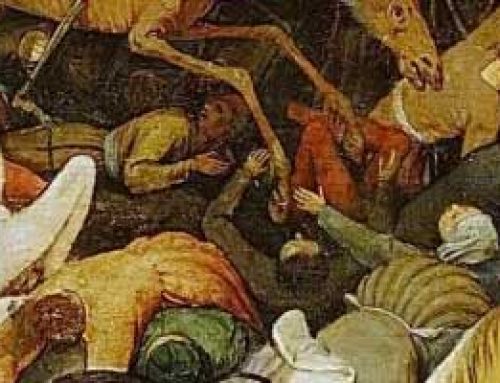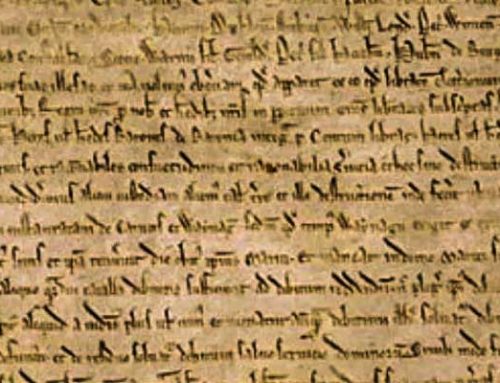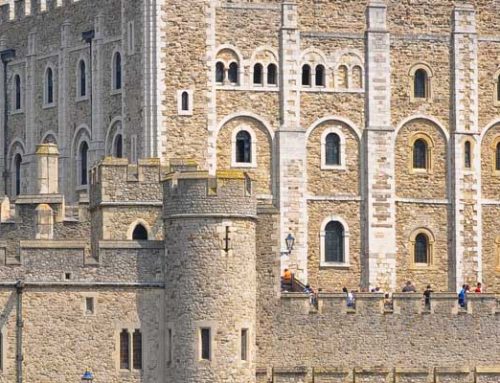In 793, a party of raiding seamen attacked Lindisfarne, a monastery off the coast of northwest England. The sack of Lindisfarne was the first significant episode of two centuries of warfare that we now call the Viking Age. The Vikings were Norsemen, or “people from the north.” They came from Scandinavia, land that includes the present-day nations of Norway, Sweden, and Denmark in northern Europe. The cold climate of Scandinavia allowed for a short growing season. So as the population became too large to feed, some Scandinavian warriors turned to the sea to find their fortune. They used their seafaring abilities to plunder and terrorize people of the Middle Ages throughout Europe and as far away as Egypt.
Viking ships were narrow and built of thin overlapping oak planks. They could bend and flex to absorb the impact of waves without breaking apart. A depth of three feet of water was all most Viking ships—even those carrying as many as fifty men—needed to move through the water.
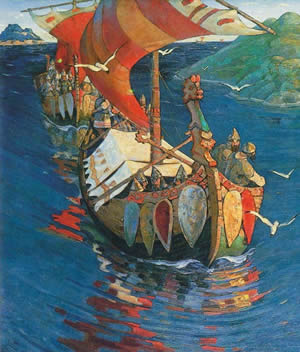
Viking_ship
Viking ships were generally characterized as being slender and flexible boats with overlapping of planks riveted together.
Viking ships could travel at a fast clip with sails or glide stealthily through the seas propelled by teams of strong rowers. The ships also were light enough to be carried overland by men when rivers became impassible. Vikings almost always had the element of surprise on their side, as their ships could seem to appear from nowhere.
For the next 250 years, Viking warriors plagued England and the coast of continental Europe. King Alfred the Great of England made peace by surrendering a portion of Britain to the Vikings. This land became known as the Danelaw—the part of Britain where the laws of the Danes (Vikings) were in effect. The Viking-controlled English city of York became a trading center.
The Vikings explored the lands both east and west of their homeland. The Rus’ were ferocious fighters who controlled a swatch of eastern Europe from the North Sea to the Black Sea. There is some dispute, but many scholars believe Rus’ derives from an Old Norse term meaning “men who row.” Present-day Russia takes it name from the Rus’.
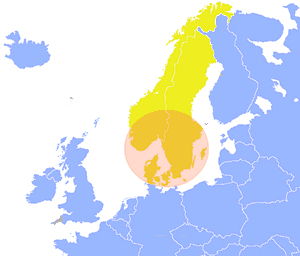
Viking_map
The Vikings were from Scandinavia in northern Europe. The present-day Scandinavian nations of Norway, Sweden, and Denmark and shown in yellow. Most Vikings came from the southern portion of the region shown inside the pink circle.
Other Vikings sailed west and discovered Iceland. In about 980, Erik the Red sailed farther west with about 300 settlers to begin a settlement on ice-covered land he called Greenland. The Vikings remained for more than four hundred years until Greenland’s climate turned colder. The land could no longer produce food, so the Vikings abandoned their settlements and returned home.
Viking legends indicate that Erik’s son, Leif Eriksson, sailed west to reach North America. The Vikings called their North American settlement Vinland, or “land of the grapes.” Archeological evidence from a site in Newfoundland, Canada, known as L’Anse aux Meadows indicates traces of a Scandinavian settlement. Evidence indicates the Vikings abandoned Vinland after about 35 years. Many historians suggest that Christopher Columbus heard the legends of the Vikings and knew of the possibility of a “New World” when he set sail to find Asia in 1492.
Some Vikings enriched themselves by demanding that communities they threatened pay a bribe to be spared an attack. The English and the Franks raised taxes called the Danegeld (Dane Gold) to pay tribute to the Viking raiders and save their land from ravaging.
In time, Vikings transformed from fierce marauders to settled people who turned their attention to domestic pursuits such as farming. Over time, various Viking groups gave up their polytheistic religion and adopted Christianity. One group of Vikings, called the Normans, settled in northwest France. In 1066, the Normans invasion of England became a turning point in European history.
Resources
Download this lesson as Microsoft Word file or as an Adobe Acrobat file.
Mr. Donn has an excellent website that includes a section on the Middle Ages.
The Neatest Warriors
The Vikings were particular about their hygiene. Several excavated Viking graves have yielded tweezers, razors, combs made from antlers and animal bones. Viking warriors also used spoons to clean the wax out of their ears. An English writer was amazed that the Vikings combed their hair daily, bathed weekly, and changed their clothing regularly. Untrimmed nails provoked particular revulsion among the Vikings. Loki was a fierce Norse god fabled to have sailed on a ship constructed of dead men’s untrimmed fingernails and toenails.


